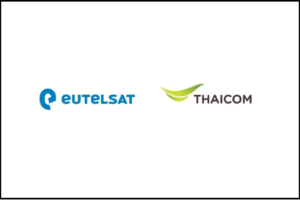As mobile data consumption increases exponentially and networks get strained with high-resolution video, telcos, and content providers continue to debate the “fair share” of responsibility for the carriage of data services. “Fair share” was a central theme at the Mobile Video Industry Council (MOVIC) live cast on April 18, an initiative led by Enea and attended by more than 90 operators and vendors from around the world, including Orange, Deutsche Telekom, and STC. Speakers included Matthias Sauder, Director of Access and Transport Networks at O2 Telefónica in Germany, Amy Cameron, Research Director at STL Partners, and Santiago Bouzas, Director of Product Management at Enea. The event titled “Video Shouldn’t Have to Cost the Earth” was moderated by Annie Turner, and guests shared their thoughts on the increasing demand video streaming is placing on mobile networks – and whether media and content players such as Netflix, Meta, and Google should contribute to infrastructure costs.
Several content players were invited to be panelists at this event to contribute to the debate; however, they declined the opportunity.
Currently, operators are responsible for managing video traffic. Video currently accounts for more than 60% of mobile traffic and is expected to account for more than 90% of 5G traffic in the coming years. The MOVIC live cast panel argued that the mobile video growth – coupled with the increase of AR and VR use – would need a multifaceted approach to management and should be fair and sustainable.
The European Commission has put forth plans for the “digital decade” – a plan to rollout out gigabit connectivity for all and ensure 5G coverage is available everywhere, but in a sustainable way where cost and responsibility are shared collectively by the digital ecosystem. The conversation was animated, with Amy Cameron voicing her concerns.
“I personally feel like the approach of making content providers pay for the access networks is not going to achieve what we want it to. I fear it could have unintended consequences. It’s not the big tech giants that will have trouble paying; it’s the small startups. This will make it more difficult for them to compete and could stifle innovation and curtail the development of new applications meant to solve our productivity challenges of today.”
O2 Telefónica’s Matthias Sauder stressed that this was obviously not what anyone wanted and that he didn’t believe that would be the case; it’s more about fair share of investment.
“It’s a controversial debate, as we see,” added Santiago Bouzas. “But in the end, operators and content providers have no choice but to work together on this because they contribute to each other’s business models. It’s not just an operator’s challenge; it’s an industry challenge and an environmental challenge.”
Energy consumption
According to the GSMA, the industry organization for mobile network operators, the radio network currently accounts for 87% of energy costs for the average operator. As network speed and functionality improve, data and energy consumption will also increase, creating a problem for environmentally conscious operators looking to fulfill their environmental, social, and governance (ESG) objectives while also keeping their energy costs in check. It also creates a problem for users, who will likely see their data allowances under increased strain as ultra-high-resolution video becomes the new standard form of delivery for content providers. So, what can be done?
Energy consumption was another contested talking point amongst guests, as the changing cost of wholesale energy caused significant financial challenges for operators. A compromise between reliability, speed, and coverage was discussed as a potential solution to lowering these energy costs. During the event, the speakers discussed the key steps operators should target as a priority to lower these costs, specifically network-related factors such as: renewing passive infrastructure with new, more efficient hardware; key software up to date; and leveraging more efficient radio technologies, for example, moving subscribers from 4G to 5G. All three steps are arguably the way toward a more energy-efficient network, but the lead time to realize these benefits is long.
Artificial Intelligence
The webinar also touched on AI’s role in network management, including the use of video delivery and management optimization, as well as changes in video protocols, such as delivering lower-resolution content to devices with smaller screens instead of automatically utilizing the highest available bandwidth and pushing the highest resolution output.
“O2 Telefónica has introduced solutions from our vendors using AI,” explained Matthias Sauder. “AI sits on top and manages our power-saving features and layer standby mode.” This AI system has been running for over a year in the 4G network and is still in further development, but O2 Telefónica is already seeing huge results. “AI is squeezing out high single digits savings out of our whole system,” Matthias added.
Along with AI, speakers also discussed the tools to classify and manage different content flows, allowing them to discern between video and other forms of content so that video data can be managed more effectively. A traffic management solution, with AI and machine learning, could be deployed, which could optimize video content streaming in real-time, reducing the amount of data transferred without compromising users’ quality of experience (QoE). Research has revealed this could reduce network-wide energy consumption by as much as 10%.
Annie Turner concluded: The biggest take away from this year’s MOVIC event was that the solution to ensure that ‘video streaming does not cost the earth’ was collaboration. The problem is multifaceted, and therefore the solution must be too”.












